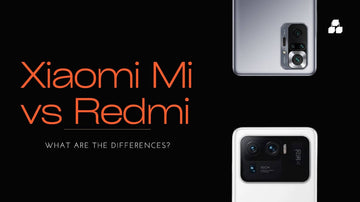
Confused about the differences between Xiaomi’s Mi and Redmi smartphones? You’re not alone.
Both sub-brands offer feature-packed devices at competitive prices, but they’re designed for slightly different audiences.
In this quick guide, we’ll break down the key distinctions covering design, performance, pricing, and who each lineup is best suited for, so you can confidently choose the right Xiaomi phone for your needs.
Check out Mi & Redmi Phones on Aliexpress
| Xioami Mi Phones | Redmi Phones | |
| Owner | Owned by Xiaomi | Sub brand of Xiaomi |
| Processors | Designed for heavy users with higher-end processors | Designed for casual users with entry-level specs |
| Build | Better phone build quality with metal design | Slightly lacks in build quality when compared to Mi phones |
| Camera | High end camera features like optical image stabilization, manual mode, dual flash mode and more | Mid-range built in camera with basic features giving you with average picture-quality |
| Design | Boasts of a more sturdy and fully metal design In-trend with the latest designs and uses premium class materials |
Mostly designed with metal body but some parts of the phone like the buttons, upper and lower parts are built with plastic |
| Software Updates | Frequent software updates focussed on making the smartphone more efficient | Lesser software updates and users often encounter bugs |
| Durability | High end Mi phones are good looking, some have glass backs but can be fragile | Redmi phones are sturdy with better durability |
| Price | Xiaomi Mi phones are premium range of phones with higher price tags | Redmi phones are designed with entry-level specs and come in the mid-range level |
| Check it out | Check it out on Amazon | Check it out on Amazon |
Are Xiaomi Mi and Redmi the same?
No, they are not the same. Xiaomi Mi is a smartphone brand whereas Redmi is a smartphone series. Redmi is the low end series of smartphones from Xiaomi and the name Redmi comes from the color of the first phone in this series. Redmi and Xiaomi Mi are made by the same company, but they are not the same phones.
Is Xiaomi better than Redmi?
That's a difficult question. It's like asking if a Porsche is better than a Ferrari. Both have their own pros and cons and in the case of the Redmi Note 10 Pro and the Xiaomi Mi 11 Ultra, both are great phones. The Mi 11 Ultra has a powerful processor that the Redmi Note 10 Pro lacks and the Mi 11 Ultra is designed to be a flagship device with a great battery life.
Both have their own pros and cons, and it really just depends on what you're looking for in a phone. If you're looking for a great phone with a large, beautiful display and a powerful camera, I'd have to pick the Xiaomi Mi 11 Ultra. If you're looking for a phone with great battery life and a lightweight device, the Redmi Note 10 Pro is the way to go.
Xiaomi Mi vs Redmi
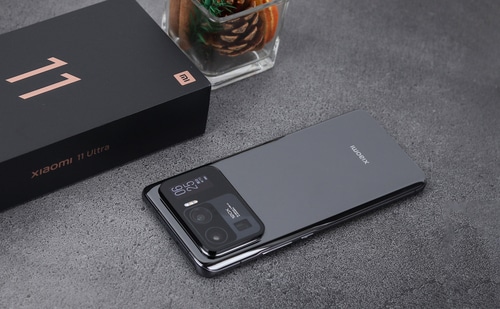
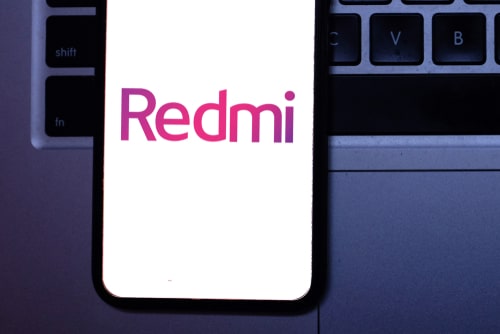
Xiaomi’s Mi Series Overview
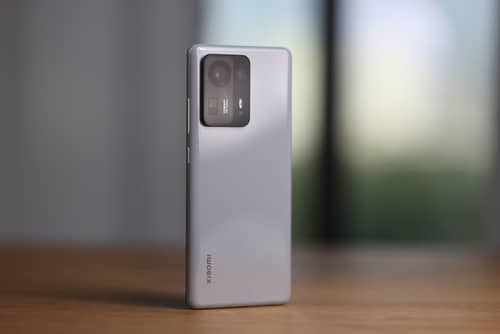
In making its Mi series of smartphones, Xiaomi has primarily targeted heavy users who would expect their phones to run faster and with better processing capabilities. Mi series phones belong to the high end smartphones among the portfolio of Xiaomi’s offerings. All of the phones in the Mi range are fitted with high end processors.
Mi phones sport a superior build quality with most of its members wearing a metal body that can withstand the drop test with the best results. The camera quality in the Mi series is much better than most other classes of phones that Xiaomi makes. Some of the interesting camera features you will find in the Mi series are dual tone flash mode, manual mode, and Optical Image Stabilization. Mi range of phones also receive faster software updates from the company.
Xiaomi’s Redmi Series Overview
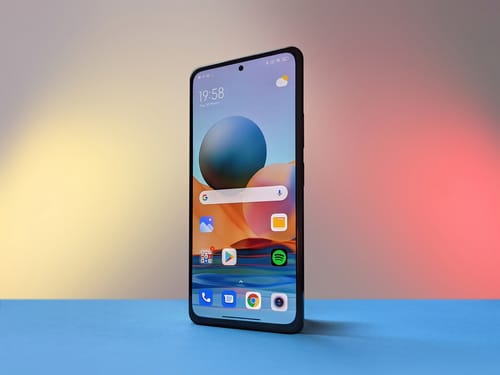
The phone build, specifications and features of the Redmi series best suit casual users. These phones do not support heavy or rough use and the target group of these phones are the day to day users who are happy with the mediocre configurations. We can say these phones are more consumer oriented and make use of lesser expensive components.
The materials employed in the making of Redmi phones are not expensive and hence these phones sport a minimalistic design. Nevertheless, these consumer oriented smartphones focus on bringing the customers access to some of the latest trends in the smartphone world like PDAF and some cool selfie features.
Xiaomi’s Mi series and Redmi series compared
Build quality
All of the Mi smartphone line of offerings are best suited for users who have a heavy use of their phones. Most of this class of Xiaomi’s offerings wear sturdy metal cases that have cleared tough drop tests. These phones are known for their better speed and better quality processors with excellent processing capabilities.
The principal focus of Redmi phones is to offer good features to the budget minded users within the lowest price possible. Though you cannot expect a sturdy build in these category of phones, they are rated good for their encouraging features and performance.
Camera quality
The Mi line of phones come with better quality cameras sporting some high end features like manual mode, dual flash mode, optical image stabilization and many other interesting and useful features.
The mid-range cameras configured in the Redmi series let you take only average pictures and you cannot depend on these phones to click high resolution photographs.
Design features
In its Mi series, Xiaomi has attempted a superior design in line with the latest design trends. These phones are made from premium class materials which is evident in their look and feel. Most of Redmi phones are also built in metal and they too sport a overall good design. Nevertheless, some parts of these phones like the buttons, upper and lower parts are made of plastic which does not assure a premium feel.
Software Updates
Mi line of Xiaomi’s offerings receive software updates quickly. These updates also aim at improving the efficiency of their phones. Redmi series phones do not get frequent software updates and even those that are provided rarely are reported to have some bugs in them. Nevertheless, Redmi phones are powered by a decent quality software and the bugs noticed do not give rise to big concerns.
Processor
Mi line of phones from Xiaomi are powered by high end processors that are of top notch quality and the latest in the industry. These processors are rated high for their performance and speed. On the other hand, the processors of the Redmi class of phones are only average ones that might not suit heavy use. To play high end games on your Redmi phone, you will have to tune the device to its best settings.
Durability
The common trend we notice with regard to the premium phones is the glass backs. Most of the high end phones we see today are good looking, but fragile. Mi is not an exception to this. Redmi phones on the other hand wear more durable metal bodies despite their cost cutting make and configuration. Hence when it comes to durability, the members of the Redmi series can overtake those in the Mi series.
User Experience
Xiaomi’s Mi class of smartphones are made to deliver the premium feel you will expect in a top rated phone. The Redmi series phones are thoroughly user oriented and hence they can assure a decent user experience proportionately to the price tags they carry.
Xiaomi’s Mi and Redmi series – Understanding the specifications
To throw more light on the mainline differences between Xiaomi’s Mi and Redmi series, here we analyze the build, configuration and specifications of a representative model from each of these series. The models we have discussed here are top selling ones with some excellent features suitable to their category.
Xiaomi Mi 11 Ultra
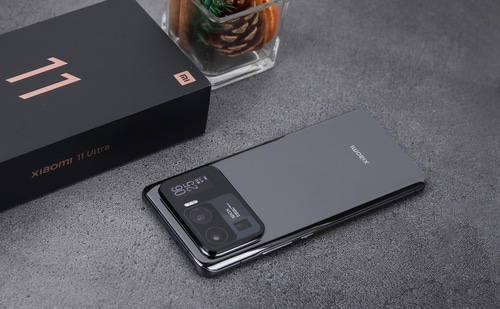
Xiaomi has crafted its Mi 11 Ultra in a stunning way. Rendered in a beautiful aluminum frame, the alluring design features of the model are its ceramic back and a curved display on the Corning Gorilla Glass Victus. All these premium materials justify its 234g weight. Mi 11 Ultra’s back features a 1.1-inch OLED display that indicates the battery level and the phone’s notifications. It can also be used as a viewfinder in the camera app.
Mi 11 Ultra’s main display is one of the best in the industry. While played locally or on YouTube, the HDR videos look great. Notably, even some heavy titles like Call of Duty: Mobile and Asphalt 9: Legends are played with the best precision and smoothness. The battery life is more than average.
Some of the notable merits of this phone are its amazing build, impeccable display with a high refresh rate, long battery life, and the finest set of cameras. The MIUI offers a refreshing experience that is free of any spamming.
Xiaomi Redmi Note 10 Pro

The Redmi Note 10 Pro has a large 120Hz OLED screen and so does its sibling the Redmi Note 10. Both of these phones come with Qualcomm's Snapdragon 732G chipset which delivers surprisingly gimped performance for when you're trying to put on your best gaming face. You get a solid 108MP camera on both phones -- albeit one with a slightly upgraded overlay on the second generation.
However, we don't recommend putting much faith into the ultra-high megapixel count on these budget devices. The camera produces nice photos, particularly while in good lighting conditions and even offers access to a decent night mode feature -- providing an overall pleasing experience across the board.
Having a strong battery life is crucial in a phone and the Note 10 Pro is no exception, lasting up to 48 hours between charges. That means you can watch some shows (perhaps using Amazon Prime Video or Netflix), make some calls, send some WhatsApp messages, use social media apps like Facebook Messenger, upload photos to Google Photos - all without worrying that your battery will run out before you have time to get back home from work!
Xiaomi Mi 11 Ultra vs Redmi Note 10 Pro Comparison
| Specifications | Xiaomi Mi 11 Ultra | Xiaomi Redmi Note 10 Pro |
|
|
|
|
| Display Size | 6.81 inches | 6.67 inches |
| Display Type & Resolution | AMOLED (120Hz) 1440 x 3200 pixels | AMOLED (120Hz) 1080p |
| Dimensions | 164.3 x 74.6 x 8.4 mm | 164 x 76.5 x 8.1 mm |
| CPU | Snapdragon 888 5G | Snapdragon 732G |
| RAM | 8GB or 12GB | 6GB or 8GB |
| Storage | 256GB or 512GB | 64GB or 128GB |
| Camera Tech | 50 MP, f/2.0, 24mm (wide), 1/1.12″, 1.4µm;48 MP, f/4.1, 120mm (periscope telephoto), 1/2.0″, 0.8µm, PDAF, OIS, 5x optical zoom48 MP, f/2.2, 12mm, 128˚ (ultrawide), 1/2.0″, 0.8µm, PDAF | 108 MP, f/1.9, 26mm (wide), 1/1.52″, 0.7µm, dual pixel PDAF8 MP, f/2.2, 118˚ (ultrawide), 1/4.0″, 1.12µm5 MP, f/2.4, (macro), AF2 MP, f/2.4, (depth) |
| Android Version | Android 11, MIUI 12.5 | Android 11, MIUI 12 |
| 5G | Yes | Yes |
| Expandable Storage | No | Yes |
| Battery Size | Li-Po 5000 mAh | Li-Po 5020 mAh |
| Wired Charging Speed | 67W | 33W |
| Wireless Charging Speed | 67W | N/A |
Take home from discussion
If you have to choose between Xiaomi’s Mi and Redmi series of phones, the choice will ultimately depend on the purpose and budget. Mi class of offerings from this Chinese phone maker are known as the firm’s flagship high end models. In most of its Mi phones, Xiaomi has packed rich features, quality build and performance. Hence, it is natural that they carry larger price tags justifying their specifications.
On the other hand, the majority of Redmi series phones are more customer focused and budget friendly ones. While they might not promise high end specifications and top performance, they do sport decent configurations in line with their prices. In its Redmi series, Xiaomi has attempted to pack as much good features as possible for the buyers looking for smartphones in the mid-range budget.
If you have challenging expectations from your smartphone, you can pick up one from the Mi series and if you are a budget conscious buyer willing to invest in a decently priced model, Redmi series will have something for you.
What is the difference between MI redmi and Xiaomi?
Xiaomi is a Chinese electronics company and Redmi is a sub-brand owned by Xiaomi. Redmi offers mid-range, good quality smartphones at affordable prices. The parent brand, Xiaomi, offers smartphones of higher range and is often compared to big brands like Apple and Sansung.
Are Mi phones Good?
Xiaomi Mi phones are designed with premium materials with excellent features and specs. They’re often compared to big brands like Samsung and Apple but with a lower price tag. Mi phones are great value for money and have the same premium feel like the higher-end smartphone brands.
Xiaomi vs Huawei Fitness Tracker
How does the Xiaomi Band detect sleep? Mi Band Sleep Tracking Accuracy Revealed!





